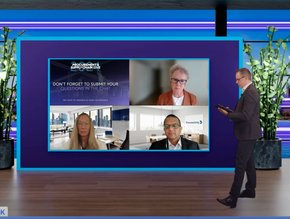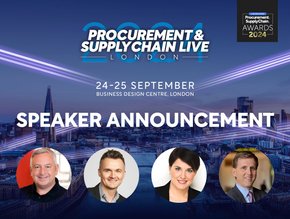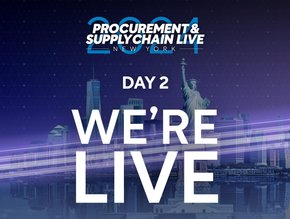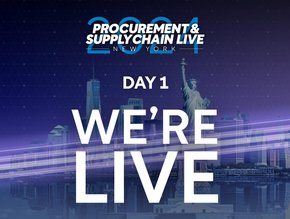ERP Systems: the future of supply chain efficiency

ERP experts from Epicor, Infor and Sage discuss the adoption of ERP systems within the supply chain industry in order to drive efficient operations.
Over the last few years, “ERP has evolved hugely,” comments Phil Lewis, Vice President, Solution Consulting EMEA at Infor, “previously it was seen as a static system of record, it has now become the basis of digital transformation - a backbone for increased agility and responsiveness. These are vital concerns in the supply chain industry, which is facing an almost perfect storm of increased regulation, huge customer demands and intense competition.” Both Robert Sinfield, Vice President Product Sage Business Cloud X3 at Sage, and Mark Hughes, regional vice president, UK and Ireland at Epicor Software, agree with Lewis. “Ultimately, supply chains can benefit from ERP technologies because it allows for consolidation of data and business applications, giving IT the capability to deliver their services in building block form. ERP allows management of purchasing, inventory, sales and finance, resulting in better productivity, efficiency and a great customer experience,” says Sinfield. “This is the only way supply chains can face the current industry challenges, is with an efficient ERP system and an efficient electronic exchange of data throughout that provides visibility and instant updating,” adds Hughes.
“What are the benefits of ERP for the supply chain? This is a question that could lead to an essay of an answer. Modern ERP is all about driving a business forward, be it faster and leaner processes, lower costs, better customer service or even developing new business and revenue streams. It sounds like a bit of a cop out, but it really does depend on the business that is implementing the technology - which means that the very first step must always be a thorough evaluation of the desired benefits and the creation of a strong business case,” says Lewis. “Introducing an ERP system to your business can improve efficiency considerably. Some of the benefits for businesses include enabling better departmental collaboration and gaining a single overview of the business that helps with insights for improvements.” adds Sinfield.
“If you went back 10 years, the trends were ‘just-in-time’ and ‘minimising your inventory’, it was all about reducing your costs. Today, key trends have shifted, focusing on customer experience and customer satisfaction. There are very few supply chains today that have a one-to-one relationship with their suppliers, a lot of people have multiple sources of supply so you need to be able to satisfy your customers requirements. Therefore, there has been a shift from minimising stock, to holding the right stock and making the right products that will satisfy demands,” comments Hughes. Agreeing with Hughes, Lewis adds that “if you look at the main trends in supply chain - be it handling disruptions better, being more agile, or the advent of digitalisation and the need for ever increasing customer responsiveness - all of these challenges are being brought to bear on the ERP and wider enterprise software space,” and there isn’t a one size fits all approach comments Sinfield, “A recent report found that existing ERP solution challenges are split between the obsolete technology foundation or infrastructure of ERP system (43%), lack of features (41%), cost of maintenance and support (27%), inability to tailor ERP solutions to integrate changes to the business (22%), lack of qualified resources to maintain and support current system (12%). The business benefits of ERP are clear to see but, when it comes to picking the right type of deployment, things aren’t quite as straightforward. From hosted and on-premise to public cloud and private cloud, there are a whole host of options for organisations to consider amidst a changing market landscape. Choosing the right option takes an investment of time and money, as well as effort in overhauling any legacy systems.”
Another challenge Hughes, Lewis and Sinfield discussed was data security. “The main issue is how do you secure the cloud. A cloud environment is only as secure as its weakest link in the cloud security chain. At Infor we employ a “defence-in-depth” strategy. Multiple layers of overlapping security to safeguard customer data through each link of the chain. These security controls are enforced by a team of specialists who continuously monitor and improve Infor Cloud security posture to stay ahead of threats and vulnerabilities,” comments Lewis.
Some of the most topical discussions at the moment, is the use of artificial intelligence and machine learning, “something which the industry has been quite slow to understand the power of,” comments Hughes, “with the use of innovative technology in ERP systems, companies can make improved business decisions via insights and analysis drawn from patterns, trends and behaviours.” Lewis adds that he too has seen this use of ERP in the supply chain industry change as a result of artificial intelligence (AI), “the algorithms in decision making and planning are already there, especially in supply chain planning. AI is vital in processing such huge attempts of data and has already begun developing predictive work flows and movement patterns for goods and even entire vessels.” Sinfield also comments that “with Big Data, you can get all sorts of devices to interact, from tablets and smartphones to robot assembly lines. Data-driven insights are key in ERP systems because they let businesses identify problem areas and build on those for operational improvement.”
Looking to the future, Lewis emphasises that “the IoT explosion is already underway but it is far from finished. The impact of the cloud will continue to reduce the impact and risk of software rollouts, which is especially relevant to ERP as it is often a large, potentially disruptive project.” But it is not only the cloud that companies should be keeping an eye out for, “you are going to see a profuse amount of new technologies driving the experience of ERP. Mobile ERP is emerging and features heavily in most business cases that we see.” Agreeing with Lewis, Hughes acknowledges the rise of mobile ERP systems as ERP’s become smaller and end-to-end solutions. “A lot of the innovations happening at the moment are centered around the user experience. The fundamentals won’t change but the way organisations use and interact with these tools is changing dramatically.” Reflecting on innovations he would like to see in the future, Sinfield highlights, “I’d like to see more green applications of ERP. The world today is suffering from far too much waste and pollution. The rise in public awareness and understanding of the problems has had a dramatic impact on human behaviour. As a result, ERP systems must be implemented to reflect this end goal and consumer need,” concludes Sinfield.






